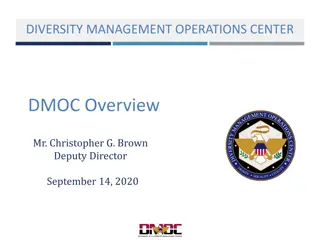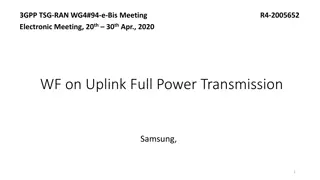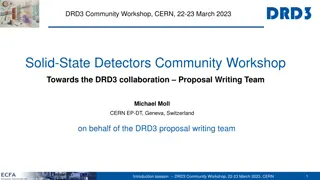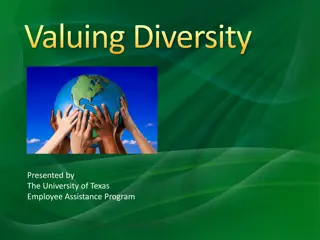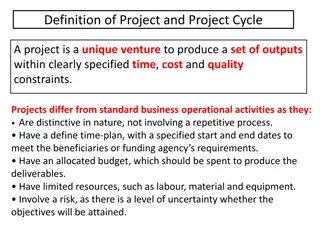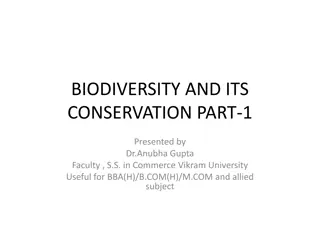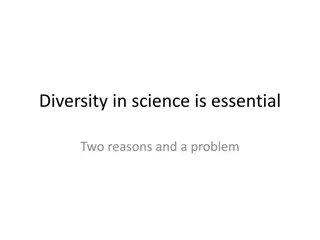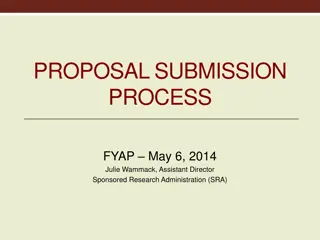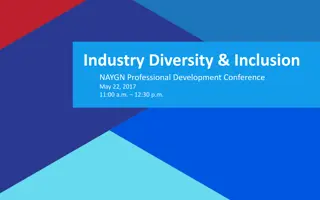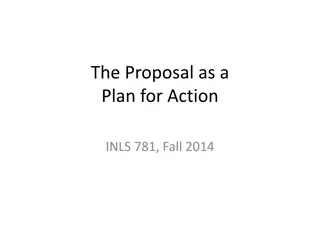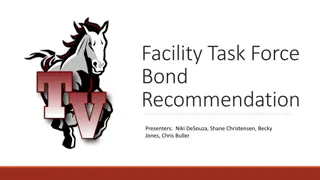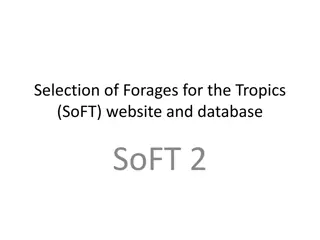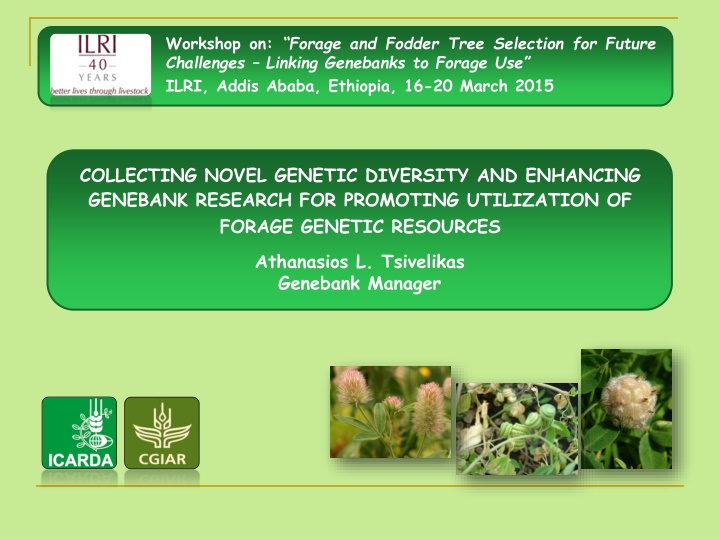
Enhancing Forage Genetic Resources for Climate Adaptation
Explore the challenges and opportunities in managing forage genetic resources amidst climate change, focusing on collecting novel genetic diversity, enhancing genebank research, and promoting utilization of these valuable resources. The proposal outlines targeted collecting missions, seed research, and technical aspects to secure climate-adapted germplasm for stakeholders.
Download Presentation

Please find below an Image/Link to download the presentation.
The content on the website is provided AS IS for your information and personal use only. It may not be sold, licensed, or shared on other websites without obtaining consent from the author. If you encounter any issues during the download, it is possible that the publisher has removed the file from their server.
You are allowed to download the files provided on this website for personal or commercial use, subject to the condition that they are used lawfully. All files are the property of their respective owners.
The content on the website is provided AS IS for your information and personal use only. It may not be sold, licensed, or shared on other websites without obtaining consent from the author.
E N D
Presentation Transcript
Workshop on: Forage and Fodder Tree Selection for Future Challenges Linking Genebanks to Forage Use ILRI, Addis Ababa, Ethiopia, 16-20 March 2015 COLLECTING NOVEL GENETIC DIVERSITY AND ENHANCING GENEBANK RESEARCH FOR PROMOTING UTILIZATION OF FORAGE GENETIC RESOURCES Athanasios L. Tsivelikas Genebank Manager
RATIONALIZATION Adaptation to climate change Global Climate Models all converge with regard to projections of: Increased frequency of drought, and high temperatures In: central North America, northern Africa, central Asia, and western Australia Source: Millennium Ecosystem Assessment (2005) http://oceanworld.tamu.edu/resources/environment- book/Images/drylandmap.jpg (Girvetz et al. 2009, Elert & Lemonick 2011) Visited October 21, 2013 Forage and Fodder Tree Selection for Future Challenges Linking Genebanks to Forage Use 18/3/2025 2
Furthermore Forage genetic resources is a very difficult material to be handled under genebank s routine operations: Requires special arrangements to multiplied/regenerated accessions (e.g. isolation cages, pollination facilitated arrangements) Difficulties on seed germination, seed longevity, seed health issues (viral load of collected material) Limited available information genebanks accessions (morphological traits, traits, nutritive value, resistance to biotic and abiotic adversities, etc.) Consequences on providing enough and diverse material to the stakeholders (breeders, research institutes, farmers, etc ) ensure the genetic integrity of Forage and Fodder Tree Selection for Future Challenges Linking Genebanks to Forage Use 18/3/2025 3
SCOPE OF PROPOSAL Targeted collecting missions to fill the gaps and for specific adaptive traits (salinity, heat, drought, etc ) Research for development (seed research, evaluation, endophytes) and on seed health related issues Securing climate change adapted germplasm to stakeholders Forage and Fodder Tree Selection for Future Challenges Linking Genebanks to Forage Use 18/3/2025 4
TECHNICAL ASPECTS Collaborators: CG Centers, External partners, NARS, Breeders Time: minimum requirements: 4 years and continuous Budget: 200,000 USD per year (depending on the extent of research) Relationship with other CRPs: CRP 1.1. in situ/on farm activities, promotion of forage use, due to new information acquired. Proposal leader: ? Using GAP Analysis and FIGS approach for targeting novel genetic diversity Collections Seed research Characterization/Evaluation In situ/on farm conservation Other research Enhancing forage research Forage and Fodder Tree Selection for Future Challenges Linking Genebanks to Forage Use 18/3/2025 5
IMPACT Novel diversity to address current challenges on forage crops (e.g. biotic and adversities) and to respond to current and future demands of the market. Utilization of the whole (or wider range) of the already existing diversity in the genebanks. Characterization, evaluation of forage genetic resources. Collaboration among institutes, conservation). Novel tools (e.g. endophytes). Readily available seed and related information for utilization. local communities (e.g. in situ Forage and Fodder Tree Selection for Future Challenges Linking Genebanks to Forage Use 18/3/2025 6
Thank You for Your Kind Attention! Forage and Fodder Tree Selection for Future Challenges Linking Genebanks to Forage Use 18/3/2025 7

